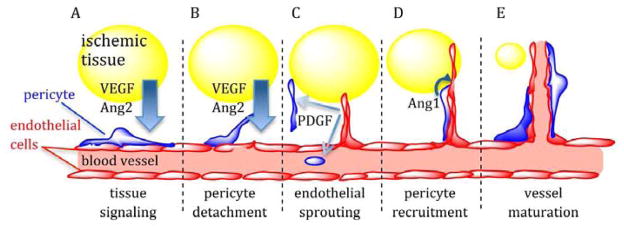Figure 1.

Model of select growth factor signaling during angiogenesis. (A) Ischemic tissues (yellow) release pro-angiogenic factors such as VEGF and Ang2, creating growth factor gradients that signal blood vessels to increase capacity. (B) Pro-angiogenic factor signaling destabilizes EC-pericyte interactions, promoting pericyte detachment from the endothelium and EC sprouting away from existing vessels. (C) As sprouts grow and penetrate hypoxic tissues, they release PDGF, which activates and recruits pericytes from surrounding tissue and progenitor cells from the blood stream to nascent vessels. (D) Pericyte-derived Ang1 antagonizes the Ang2 receptor (Tie2) and serves as a stabilizing factor that strengthens pericyte-EC interactions and promotes vessel maturation and lumen formation (E).
